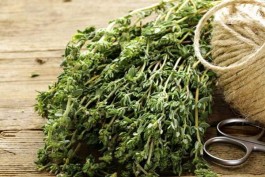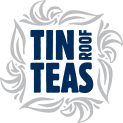Fall Holistic Health

Fall Holistic Health: Flu shot or herbal tea? It’s up to you, but my flu shot resides in my herbal teapot!
You have probably noticed it yourself, more adverts for flu shots in both the daily newspapers and on TV. They arrive on my media radar screen as soon as the morning air starts get crisper and the days shorten, imparting urgency and almost a fear factor.
I personally have never had a flu shot and choose not to; rather, I focus on daily doses of holistic wellness and prevention I can brew up in the kitchen. One of the first tools in my holistic wellness toolbox is to start preparing more herbal teas specifically to boost my immunity with tastes and aromas that conjure up cozy Fall evenings curled up by the fire reading a great book.
As I look at my list of botanical choices for tea a myriad of flavors entice me to concoct all sorts of new blends. Instead, I focus my attention on creating blends that can give me a tasty and satisfying immune boost, and I plan to drink at least three cups of the blend a day. I build my herbal tea blends from at least one or two roots, or rhizomes, a bark, and then add some leaf and lastly flowers, berries, or seeds. Flavor and aroma are equally as important as taste so keep that in mind as you blend. Start with small quantities (1 tsp to 1 tbsp), because that way if the result tastes really bad it is not a huge loss. Mind you even a bad-tasting tea can be ground into a fine powder in your blender and encapsulated with the help of a super quick handy capsule machine, so never throw out any blend!
One note: I always seek out certified organic, but some of these herbs you can sustainably wildcraft and dry for later use. Keep your list and as the seasons change, note where these wild plants are, and make a note in your journal or diary to harvest them at that time next year.
Here are some of my favorite immune herbs for Fall teas, and remember … don’t wait to get the flu. Start blending and drinking herbal tea now.
Roots
Astragalus (Astragalus membranaceus), Ashwagandha (Withania somnifera), Dandelion (Taraxacum officinale), Echinacea (Echinacea angustifolia), Yellow Dock (Rumex crispus), Licorice (Glycyrrhiza glabra), Ginger (Zingiber officinale), and Marshmallow (Althaea officinalis)
Barks
White willow (Salix alba) and Wild Cherry (Prunus serotina)
Leaves
Chickweed (Stellaria media), Lemonbalm (Melissa officinalis), Mullein (flowers and leaves) (Verbascum thapsus), Peppermint (Mentha piperita), Plantain (Plantago major), Rosemary (Rosmarinus officinalis), Sage (Salvia officinalis), Spearmint (Mentha spicata), Thyme (Thymus vulgaris), and Yarrow (Achillea millefolium)
Flowers, Berries, and Seeds
Calendula (Calendula officinalis), Chamomile (Matricaria recutita), Elder (flowers and berries) (Sambucus canadensis), and Yarrow (Achillea millefolium)
Herbal teas are a great way to start your home herbal apothecary. There are no definite rules for blending herbs in a tea mixture. I think a pleasant taste and aroma are major priorities. Holistic health includes our daily physical, emotional, and spiritual health, and let’s face it–when it tastes nasty, you might drink it once but not twice! Aromatic herbs such as peppermint, fennel, mint, ginger, lemon balm, and lemon verbena will all enhance the flavor of a bland tea such as oatstraw or a strong-tasting tea such as thyme.
Remember, quantities matter. So just like cooking a recipe might call for three cups of sugar but only 1 tsp of salt, same with herbs. If you are not familiar with the herb, nibble it, crush it to release the aroma, and smell it. If it smells and tastes great to you add more, but if it is strong and overpowering add much less. You can also add honey or sugar and lemon. You may also want to consider making your tea a pretty color. Try a pinch or turmeric or saffron. Both give a wonderful golden hue and added medicinal support.
If you are choosing a tea to correct a particular ailment rather than everyday wellness, choose an herb for the primary therapeutic action; then you can add a secondary herb to assist the action of the main herb. For example, say despite all your daily wellness protocols you have come down with a cough, headache, and fever. An effective tea would be:
• Marshmallow: for the cough and irritation (expectorant and demulcent); with
• Yarrow: for the fever and cough (diaphoretic and expectorant); and
• Peppermint: to improve the flavor of the mixture. The antispasmodic action would assist the cough.
Of course you can also add therapeutic organic supportive essential oils to improve your blend, but that is the subject for another blog.
Author: ACHS President Dorene Peterson
Source: info.achs.edu/blog/bid/231577/Fall-Holistic-Health-A-Flu-Shot-or-Herbal-Teas

